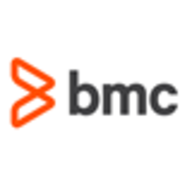

![Threat Stack Cloud Security Platform [EOL] Logo](https://images.peerspot.com/image/upload/c_scale,dpr_3.0,f_auto,q_100,w_64/o0no0it6ybl6satjcxomcblsgmd6.png)
Threat Stack Cloud Security Platform [EOL] and BMC Helix Cloud Security compete in the cloud security category, with BMC Helix demonstrating a stronger feature set, offering broader capabilities that are often considered worth the investment.
Features: BMC Helix Cloud Security provides extensive automation, compliance tools, configuration management, and robust policy enforcement, enhancing integration with various cloud services. Threat Stack Cloud Security Platform [EOL] is notable for real-time monitoring and alerting, facilitating enhanced threat detection, connectivity with Docker containers and AWS, and customizable rule sets that provide visibility and control.
Room for Improvement:BMC Helix Cloud Security could benefit from simplifying its deployment process, enhancing user interface intuitiveness, and expanding third-party integrations. Threat Stack Cloud Security Platform [EOL] could improve by offering more thorough documentation, refining its alert management to reduce noise, and enhancing its capabilities in container and Kubernetes monitoring.
Ease of Deployment and Customer Service: Threat Stack Cloud Security Platform [EOL] is praised for easy integration and attentive customer service, streamlining onboarding. BMC Helix Cloud Security presents a more complex deployment that is offset by comprehensive documentation and superior educational tools, ensuring thorough support during implementation.
Pricing and ROI:Threat Stack Cloud Security Platform [EOL] offers competitive pricing with an efficient security management return on investment. BMC Helix Cloud Security, while having higher initial costs, provides an elevated potential ROI due to advanced features and automation, promising significant long-term value.


SentinelOne Singularity Cloud Security protects cloud workloads, offering advanced threat detection and automated response. It integrates seamlessly with cloud environments and secures containerized applications and virtual machines against vulnerabilities.
SentinelOne Singularity Cloud Security is renowned for its efficiency in mitigating threats in real-time. The platform integrates effortlessly with existing cloud environments, ensuring robust cloud security management with minimal manual intervention. Securing containerized applications and virtual machines, it excels in threat intelligence and endpoint protection. However, improvements are needed in performance during high workload periods, and more integrations with third-party tools and better documentation would be beneficial. Users often find the installation process complex, support response times slow, and the dashboard's navigation unintuitive.
What are the key features of SentinelOne Singularity Cloud Security?In specific industries, SentinelOne Singularity Cloud Security is implemented to safeguard critical data and infrastructure. Organizations in finance, healthcare, and technology depend on its real-time threat detection and automated response to protect sensitive information. Its ability to secure containerized applications and virtual machines is particularly valuable in dynamic environments where rapid scaling is necessary.
BMC Helix Cloud Security is a SaaS tool designed to help organizations reduce compliance and security lapses resulting from next-gen container and cloud technologies. The solution offers a fully transparent, user-friendly view of all compliance data gathered throughout container resources, cloud, and data centers. BMC Helix Cloud Security can be used to insert compliance inquiries precisely in DevOps workflows for immediate assessment in relation to critical “go, no-go” conclusions throughout the entire workflow.
BMC Helix Cloud Security offers enterprise organizations a unique compliance solution with robust functionalities to concentrate on numerous use processes that may interfere with digital transfigurations, such as:
BMC Helix Cloud Security is SaaS, which makes it a very flexible solution. It is able to integrate seamlessly with many of today’s enterprises’ demands. BMC Helix Cloud Security can easily perform as a policy-as-code (YAML) based protocol language, open RESTful APIs, or by seamlessly compiling extensible data connectors.
Many of today's enterprise organizations must comply with numerous policies and regulations to maintain effective operations. BMC Helix Cloud Security ensures an enterprise organization is able to satisfy regulatory standards such as Sarbanes-Oxley (SOX) Act, Defense Information System Agency (DISA), or any other stringent government or internal organizational compliance standards. The solution has a comprehensive compliance policy that utilizes mode-two capabilities and will ensure that an enterprise organization will greatly minimize or even negate the threat of ransomware and data breaches throughout its network.
BMC Helix Cloud Security will also see that container and container hosts are configured correctly and will then regularly audit to ensure compliance at the three important levels of compliance - images, daemon configuration, and host configuration.
BMC Helix Cloud Security is designed to identify vulnerabilities by dissecting and thoroughly investigating compliance data for container and cloud resources and delivering the outcomes through a friendly, easy-to-understand dashboard. The solution can also provide support for unique or custom sources, provided that data is in a JavaScript Object Notation (JSON) format.
BMC Helix Cloud security is also able to help discover and minimize vulnerabilities created by new services, objects, and resources instituted by containers and public clouds. These can sometimes be forgotten, creating a tremendous risk to an organization. BMC Helix Cloud Security will ensure these new services will be carefully and continually monitored to ensure industry and government standards and regulations are not being compromised. The solution is continually dissecting data and then will deliver outcomes in a dynamic, easy-to-understand dashboard.
BMC Helix Cloud Security offers a user-friendly, robust, complete compliance strategy to ensure organizations maintain the highest levels of productivity and profitability while negating the risk of any type of compliance vulnerabilities.
Threat Stack Cloud Security Platform [EOL] offers robust security features including endpoint monitoring, rule customization, and integration capabilities, with easy connectivity to cloud services like Docker and AWS.
Threat Stack Cloud Security Platform [EOL] provides tools for enhancing security visibility across cloud infrastructure. It supports AWS and Docker integration, facilitating efficient threat detection and management. Users appreciate its capability to configure customizable alerts and monitor endpoints, sessions, API interactions, and cloud services. However, there are areas needing improvement, such as better serverless environment support and reduced alert frequency. The platform services smaller organizations by compensating for limited security resources with its comprehensive monitoring and auditing tools.
What are the key features?In specific industries, Threat Stack Cloud Security Platform [EOL] is utilized for its strength in monitoring cloud infrastructure and preventing unauthorized access. Organizations in fields where cloud operations are critical use it for regular audits and monitoring. Its capabilities in threat management are leveraged to maintain secure operations and compliance, especially where there is no dedicated security team.
We monitor all Cloud Workload Protection Platforms (CWPP) reviews to prevent fraudulent reviews and keep review quality high. We do not post reviews by company employees or direct competitors. We validate each review for authenticity via cross-reference with LinkedIn, and personal follow-up with the reviewer when necessary.